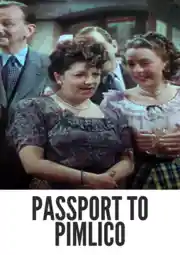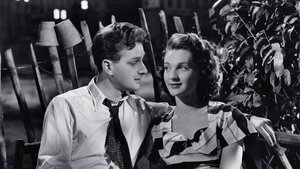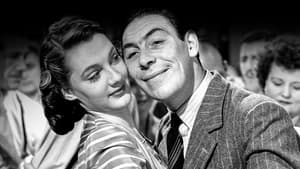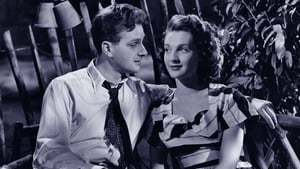Contact: [email protected]
Video Sources 0 Views

Passport to Pimlico Colorized 1949: Best Chromatic Journey through Classic Comedy
Synopsis
[ez-toc]
Introduction
As the wheels of time turn, they often bring forth changes that challenge our perception of the past. One such transformation is the controversial practice of colorizing old films, a process that aims to breathe new life into black-and-white classics. In this article, we delve into the vibrant world of colorized movies, with a specific focus on the 1949 British comedy gem, “Passport to Pimlico Colorized.” As we navigate through the lanes of cinematic history, we’ll explore the significance of this film in the Ealing Comedy genre, unravel the complexities of film colorization, and ponder the arguments for and against this divisive practice.
Read Media File Transfer Agreement: Terms and Conditions
Read FAQ
The Significance of Passport to Pimlico Colorized in the Ealing Comedy Genre
Directed by Henry Cornelius and penned by T. E. B. Clarke, “Passport to Pimlico Colorized” stands as a testament to the unparalleled charm of British comedy. Set against the backdrop of post-war London, the film follows the quirky residents of Pimlico who discover they are, in fact, part of the independent state of Burgundy. The stellar cast includes Stanley Holloway, Margaret Rutherford, Hermione Baddeley, Basil Radford, and Naunton Wayne, each contributing to the film’s delightful humor.
Within the pantheon of Ealing comedies, “Passport to Pimlico Colorized” occupies a special place, showcasing the distinctive British wit and satirical humor that defined the studio’s productions. Stanley Holloway’s impeccable comedic timing, Margaret Rutherford’s eccentric charm, and Hermione Baddeley’s vivacious energy add layers of hilarity to the storyline. The British Film Institute celebrates this film as a masterpiece, a whimsical exploration of human nature set against the absurdity of post-war bureaucracy.
Understanding Film Colorization and Its Controversies
Before we delve into the colorized version of “Passport to Pimlico Colorized,” let’s unravel the process of film colorization and the controversies surrounding it. Initially introduced as a means to modernize old films, colorization involves adding color to black-and-white movies through various digital techniques. In the context of 1949, when “Passport to Pimlico Colorized” was originally released, colorization was but a distant dream.
The controversy surrounding colorization revolves around the ethical questions of altering an artist’s original vision. Many argue that the black-and-white aesthetics of classic films are an integral part of their artistic identity. However, as technology advances, the debate rages on, prompting us to explore the impact of colorization on films of yesteryear.
The Colorized Version of Passport to Pimlico Colorized: A Different Perspective
Enter the colorized edition of “Passport to Pimlico Colorized,” a bold reinterpretation of a black-and-white masterpiece. The decision to add color is not merely a technical one; it is an artistic choice that shapes the viewer’s perception of the film. The color palette chosen for this edition plays a pivotal role in determining the mood, atmosphere, and overall cinematic experience.
Picture this: the burgundy post-war rationing of Pimlico now vividly brought to life in shades of reds and browns. The quaint London enclave, once confined to black and white, bursts forth in a spectrum of colors. While purists may cringe at the thought of tampering with the film’s original aesthetics, others argue that colorization enhances the emotional impact, making the narrative more accessible to contemporary audiences.
As we dissect specific scenes, the impact of colorization becomes evident. The hues chosen for the government procedures, the resilience of Londoners, and the satire on wartime bureaucracy take on new dimensions. While the debate on colorization continues, it’s hard to deny the visual allure that a well-executed color restoration can bring to an old film.
Arguments in Favor of Film Colorization
Proponents of film colorization argue for its potential to breathe new life into old movies, making them more relatable to modern audiences. By adding color, these classics can bridge the generational gap, inviting a broader audience to appreciate the timeless stories they tell. Cinematic modernization, they claim, is essential for preserving the relevance of classic cinema in an ever-changing world.
The enhancement through color extends beyond mere aesthetics. It can bring forth nuances and details that were previously lost in the shadows of black and white. For films like “Passport to Pimlico Colorized,” colorization offers a chance to showcase the vibrancy of post-war London and the quirks of its residents in a way that transcends the limitations of monochrome cinematography.
Critics’ Perspective: Preserving Authenticity and Artistic Intent
While the allure of a colorized “Passport to Pimlico Colorized” may be undeniable, critics argue for the preservation of the original black-and-white aesthetics. The integrity of the filmmaker’s vision, they claim, resides in the deliberate choice of monochrome. Black and white, with its stark contrasts and shadows, creates a unique atmosphere that is integral to the storytelling.
The opponents of colorization advocate for maintaining the artistic intent of the creators. They argue that altering the visual language of a film compromises its authenticity. The debate extends beyond mere nostalgia; it is a plea to safeguard the historical and artistic significance of these cinematic treasures.
Striking a Balance: The Case for Offering Both Versions
In the midst of this cinematic tug-of-war, a middle ground emerges. The case for offering both the original black-and-white and the colorized versions of classic films gains traction. Comprehensive home media releases could provide cinephiles with the choice to experience these films in their original glory or with a splash of color.
This approach seeks to respect the artistic intent of the filmmakers while acknowledging the evolving preferences of diverse audiences. It’s an attempt to strike a balance between preservation and adaptation, ensuring that classic cinema remains accessible to all without compromising its inherent value.
The Enduring Value of “Passport to Pimlico Colorized” in Its True Form
As we navigate through the streets of Pimlico, it becomes evident that the enduring value of “Passport to Pimlico Colorized” lies not solely in its color or lack thereof. The film, at its core, is a satirical masterpiece, a commentary on government procedures and human nature. The Burgundian enclave serves as a metaphor for the resilience of ordinary individuals in the face of bureaucratic absurdity.
The narrative, enriched by the performances of Holloway, Rutherford, and Baddeley, transcends the need for colorization. The shades of humor, satire, and social commentary embedded in the script remain timeless. “Passport to Pimlico Colorized” invites us to reflect on the quirks of human behavior and the resilience of communities, transcending the constraints of a specific time or color palette.
Preserving the Legacy of Classic Cinema
In the quest to appreciate classic cinema, preservation becomes paramount. The techniques used in film preservation go beyond colorization debates. They involve meticulous efforts to safeguard the original versions of these cinematic treasures, ensuring that future generations can experience these films in their intended form.
Appreciating film history requires a collective commitment to supporting archival initiatives. Film preservationists play a vital role in maintaining the integrity of classic movies, allowing us to revisit the past and understand the evolution of storytelling through the lens of different eras.
Embracing the Past and Present of Cinematic Experiences
As we bid adieu to the colorful streets of Pimlico, we find ourselves at the crossroads of cinematic nostalgia and innovation. Ealing Studios, with its legacy of producing timeless comedies, including the acclaimed “Passport to Pimlico Colorized,” continues to influence contemporary filmmakers. The film’s recognition at the British Film Award for Best British Film and Academy Award for Writing (Story and Screenplay) echoes its enduring impact.
Celebrating the past and present of cinematic experiences means embracing the diversity of storytelling. It’s about cherishing the nostalgia of old films while welcoming the innovations that shape the future of movie-making. The radio adaptation of “Passport to Pimlico Colorized” and its continued influence on comedic sensibilities showcase how the echoes of the past resonate in the narratives of today.
Conclusion
In the grand tapestry of film history, the colorized version of “Passport to Pimlico Colorized” emerges as a unique brushstroke, adding a layer of vibrancy to a black-and-white classic. The debate surrounding film colorization is nuanced, with valid arguments on both sides. As consumers of cinematic art, it becomes our responsibility to approach colorized movies with discernment, appreciating the potential they hold in introducing new audiences to vintage films.
In our journey through the comedic streets of Pimlico, we’ve witnessed the timeless humor of British comedy, the challenges of film colorization, and the enduring value of classic cinema. Let us continue to explore the vast landscape of old movies, both in their original black-and-white form and as carefully executed color restorations, to fully appreciate the multi-faceted nature of film history. As we navigate the cinematic landscape, let’s ensure that the past and present coexist harmoniously, enriching our collective understanding of the art of storytelling

















